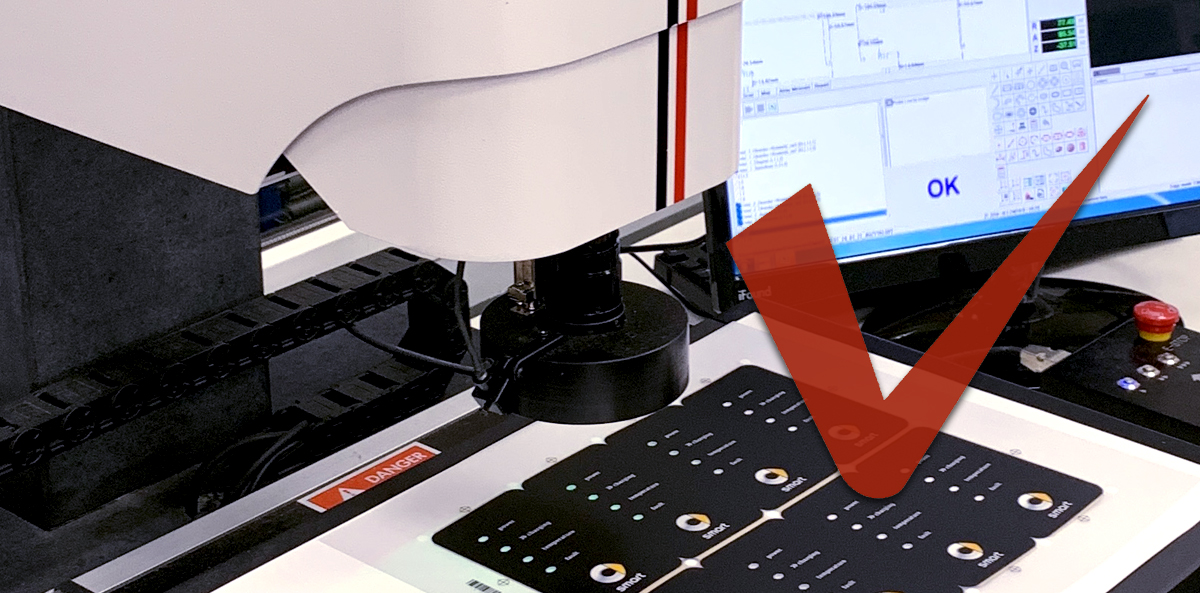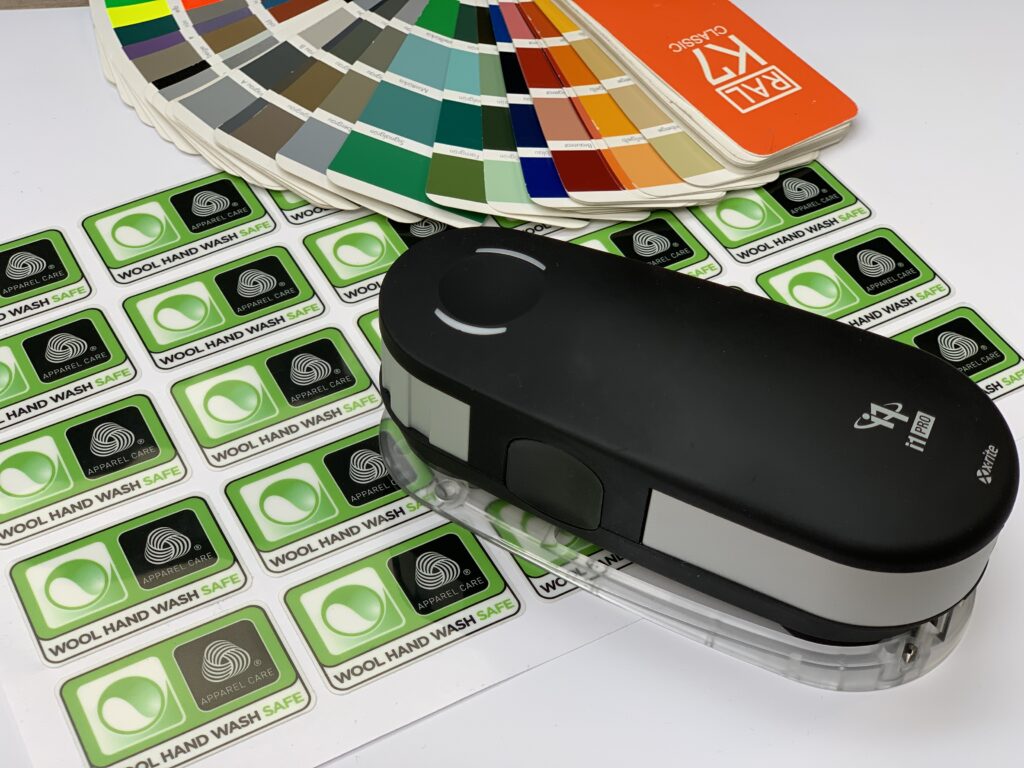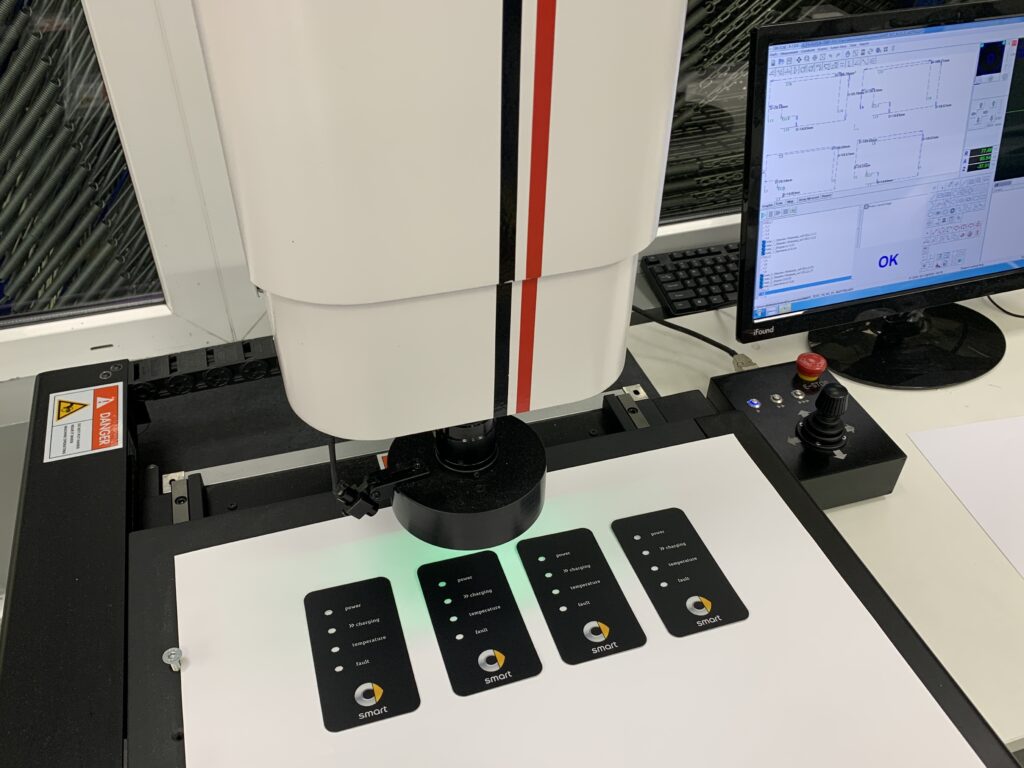
Front panels and control panels: measurements and quality control during production
In the time of increasing awareness and more and more specific customer expectations as well as growing competition, printing companies are facing plenty of challenges. One of the most significant ones is to meet quality expectations according to the customer requirements and specifications and the accepted standards for a given product group while optimising production costs.
Nowadays, a properly automated quality control at particular stages of production is an indispensable tool used to monitor compliance of manufactured goods with the accepted standards based on well-defined procedures. It makes it possible to detect many defects and their areas of occurrence at the initial stages of production before the product is finished and shipped to the customer. It is of immense importance in the case of all kinds of front panels, decorative panels, or control panels. That is why restrictive quality control at each stage of production and control of the finished product are particularly significant. They enable you not only to avoid subsequent complaints but, above all, to:
- detect defects quickly
- recognise the area of their occurrence
- introduce corrective actions.
Based on the records kept of such activities it is possible to conduct analyses which will influence the elimination of identified problems and the improvement of quality and efficiency. And thus, the reduction of losses and waste. From the customer’s perspective, this is also particularly significant since it provides them with the certainty of receiving a product that meets their expectations and that they can use in their further production without a detailed incoming goods inspection.
Front and control panels: quality verification at every stage of production
Quality control is understood as all automated and manual control activities carried out in accordance with strictly specified procedures and guidelines at all stages of production up to the finished product.
In our company, on the basis of ISO 9001 and 14001 procedures, various control and measurement processes are applied depending on the type of the product itself. In many cases control activities based on customer requirements are also implemented, such as for example measurements of resistance of the printed area.
Basic control activities include:
- Verification and inspection of the input material on which the printing is to be conducted. These are most frequently sheets of plastic or finished components from an injection moulding machine. This verification, apart from checking the material specification of the raw material and compliance with RoHS standards, involves checking dimensions and a general visual assessment for defects such as scratches, creases, contamination, dust etc. After the inspection at the inbound warehouse, the material is labelled accordingly and released for production.
- Verification and inspection of the remaining materials used at particular stages of production. The inspection concerns the release of adhesive layers and screen-printing inks specially labelled and assigned in the system to a specific product and a specific order. Before being released for production, inks are checked for their expiry date and correct consistency and colour match. Ink labelling eliminates the risk of confusion and the operator using the wrong ink for a particular product. A special production supervision system with a terminal and scanner at each production cell checks the correctness of the material or ink used in the process.
- Control and release of printing. The first stage of production is to prepare and set up the printing machine for the realisation of a specific product. This is followed by flooding with the right inks and setting the previously saved printing parameters for a given product. At this stage, the first prints are made, and settings are corrected until the first so-called good piece is obtained. It goes to the quality controller who checks its compliance with the archived customer-approved template and the dimensional specifications and technical documentation available in the system.

The inspection is conducted by:
- visual comparison with a physical sample from sample production or with a sample received from the customer, and checking the graphic compliance with the image linked to the product card in the IT system
- verification of colour intensity and correctness using a spectrophotometer
- verification of the main dimensions and print position on the sheet or finished product using an automated vision measurement system
- testing the durability of the print and adhesion of the ink to the substrate: (cross-cut test, abrasion test, test of resistance to chemical agents)
- other special tests indicated by the customer.
After all the above-mentioned control processes have been conducted by an employee, the print is released for serial production or production is blocked and corrections are indicated.
- Inspection during printing. The design of screen-printing machines and the printing process itself provide extremely limited possibilities for the installation of automated quality control vision systems operating in-line on the machine itself. Therefore, in practice, external visual control is used after coming out of the machine where the quality control employee or the operator himself carries out a visual assessment of 100% of the coming out products or sheets. The operator checks correctness of the print and catches any defects or deviations from the norm. Defective product and semi-finished products are labelled and placed in a separate container. Depending on the procedure assigned to a given product, during printing, e.g., every 10, 20, 50 or 100 pieces, a more detailed verification of the correctness and position of the print is conducted using digital measuring devices which enable the operator to correct any deviations or eliminate defects.
- Inter-operational control. The production of all kinds of panels, whether printed directly on finished components or printed on sheets, consists of many processes. These include, for example, the application of adhesive layers, punching with CNC plotters or die-cutting presses, securing the product, and packaging it in accordance with the specifications. Each of these stages involves defined control procedures using measuring equipment, vision measurement systems and ready-made gauges received from the customer.
- Product labelling. At the final stage, each individual finished product is marked with a small, personalised sticker with a QR code, which makes it possible to fully identify the product and check its whole production path from the issue of raw and ancillary materials to the final product. Thanks to that it is possible to easily determine which batch or delivery the product came from. In the case of a possible complaint, this is essential and makes it possible to take specific and targeted corrective actions.
- Final control. Despite many control stages during production and packaging of the finished product, all the products are placed in an intermediate warehouse which is under the supervision of the Quality Control department. An employee of this department carries out a full control of randomly selected products, from graphic correctness, through taking measurements, checking colours, to packaging and quantity compliance. After proper labelling of the packaging, the products are released and transferred to the main shipping warehouse from where they are delivered to the customer.

Repeatability in the panel production process
The quality processes and stages described briefly are to ensure safety of the supply chain and guarantee perfect and repeatable quality and 100% compliance with the customer requirements. At the same time, they protect not only us as a supplier of components, but also the customer from the consequences of delivering a defective final product to the market. Quality control is also essential for the improvement of production processes and simultaneously contributes to awareness and responsibility among employees. Is makes it possible to use the resources in a more efficient way and, at the same time, receive products of high and proven quality at reduced production costs.
Considering the above-mentioned benefits, we keep developing our control procedures and invest in modern equipment and quality control systems. We are convinced that this will translate to even greater satisfaction and trust among our customers.